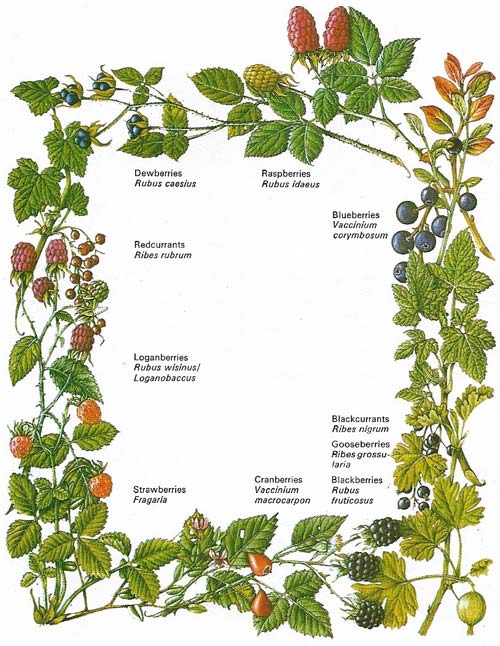berry

Succulent fruits such as the raspberry have been popular and widespread since ancient times. The soft red flesh of this berry makes it an ideal fresh dessert. Blueberries and blackcurrants are both rather acid and these fruits are better cooked or made into jellies. Gooseberries make a delicious filling for tarts and pies. The soft purplish-black fruit of blackberries does not keep for long and these should be used as a pie filling soon after picking. The cranberry is most often used to make preserves and sauces or to add flavor to meat. Juicy red strawberries, eaten fresh with cream and sugar, are one of the most popular berries. Sweet loganberries are served stewed with sugar. Redcurrants are also eaten fresh as a dessert, or as an excellent jelly. The dewberry is similar to the blackberry but has a trailing stem and the fruit is generally thought to possess a finer flavor.
A berry is a fleshy fruit normally with many seeds, although occasionally only one, as in the date. The tomato, melon, orange, and grape are examples of berries. The name is often given to "false fruits" such as the strawberry, and aggregate fruits such as the raspberry. See also drupe.
Of all the fruits eaten by man the strawberry is one of the most prized. The natives of Chile were cultivating plump, aromatic strawberries long before Europeans reached South America. In the early eighteenth century these plants were brought to Europe and crossed with the already established North American sweet variety. A new strawberry (the one eaten today) was produced, combining the size of the one with the excellent flavor and color of the other, and is known botanically as Fragaria ananassa.
The red raspberry (Rubus idaeus) is native to most European countries, although the best crops come from temperate areas where summer days are long. Different varieties of the fruit have been developed for other conditions. A yellow raspberry is also grown in England as is the hybrid loganberry – a cross between the raspberry and blackberry (Rubus fruticosus) – which originated in California. Other types of hybrid blackberry are the boysenberry and the phenomenal berry, similar to the loganberry but with slightly larger fruit.
The hardy blackberry with its trailing brambles and clusters of fruit is a familiar wild plant in many places. The black mulberry (Morus nigra) has been cultivated for centuries both for its dark red fruits and for its ornamental attraction. The white mulberry (M alba) originated in China and its leaves are used in silkworm culture.
Bilberries, blueberries and whortleberries are all species of Vaccinium. Cranberries, native to Europe and America, also belong to this genus. Their crimson, acid fruit make an agreeable sauce or jelly to accompany venison or turkey. The scarlet berries of the rowan or mountain ash are inedible when raw, but, cooked and jellied, they lend a tart contrast to game and venison. Red, black and white currants (Ribes spp) are familiar as garden plants and have been grown in Europe since the fifteenth century. Rich in vitamin C, blackcurrants were once regarded as a cure for sore throats but are now gathered to make fruit syrups, jams and jellies. Redcurrant jelly is used in France with game stews and in Britain with roast lamb.
Closely related to the currants is the gooseberry (Ribes grossularia) whose greenish fruits have been a common sight in English gardens since 1600. This deciduous plant flourishes in northern climates even up to the Arctic Circle. The red, green or yellow berries can be sweet or acid, smooth or hairy, some making reasonable dessert when fully ripe, but are excellent for bottling, jam, and pies and of course for making gooseberry fool in which the fruit is stewed, made into a puree and mixed with cream or custard.


